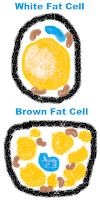Exercise... Bad For The Immune System?!
Ever wonder why you felt cold-like symptoms the morning after a hard workout? While exercise has always been known to provide a long list of health benefits, it may be surprising to hear that exercise can actually hurt the immune system. Depending on the intensity, duration and the time spent on recovery, the immune response to exercise can be either good or bad. Researchers who investigated the relationship between the immune system and exercise found that two changes typically occur. Both cell production and their function changes after a bout of exercise (1,2,3,4,6). Negative changes in the immune system tends to occur with continuous endurance exercises and interval training. This news probably sounds ridiculous since that describes just about every type of aerobic workout, but don't worry, I'll explain how to prevent this problem from occurring. IMMUNE SYSTEM 101: If I were to say that neutrophil production increased as a result of exercise, this wouldn't mea


